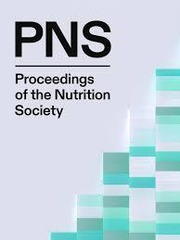No CrossRef data available.
Article contents
Eating within planetary boundaries – can the EAT-Lancet reference diet provide adequate iodine?
Published online by Cambridge University Press: 11 August 2025
Abstract
EAT-Lancet Commission on Healthy Diets from Sustainable Food Systems proposed a global healthy reference diet that addressed both the needs for health and environmental sustainability (1). As the diet was predominately plant-based, there are concerns about the iodine adequacy of the EAT-Lancet reference diet (2). Other studies have examined the provision of micronutrients but did not include iodine (3). Therefore, this study aimed to evaluate the iodine provided by EAT-Lancet reference diet in 16 countries around the world, using country-specific food tables.
Each food code in the EAT-Lancet reference diet was matched with nationally-representative food composition data and the iodine content was extracted. Total iodine provided by the EAT-Lancet diet was calculated for each country and compared against iodine intake recommendations (adults: 150μg/day, pregnancy 200-250μg/day). Iodine content was calculated for two dietary scenarios: strict adherence to the EAT-Lancet diet (Tier 1) and an expanded version with more varied food items (Tier 2). The iodine content of a vegan version of the EAT-Lancet reference diet was also calculated.
Sixteen countries with iodine data were included. Iodine content in the Tier 1 diet ranged from 45μg/day in New Zealand to 128μg/day in the UK, covering 30-85% of the adult RNI. In Tier 2, the iodine content increased in countries that used iodised salt in bread making but remained below the RNI in most countries. Dairy foods, fish, and eggs were the primary contributors to iodine intake in most countries. However, the wholegrain group was the primary contributor in countries that add iodised salt to bread products. The vegan version of the EAT-Lancet reference diet did not cover the RNI for adults or pregnancy in both tiers of analysis, meeting less than 10% of recommended intake in some countries.
This study highlights the need for further evaluation of plant-based dietary recommendations to ensure iodine sufficiency is not compromised, particularly in populations with limited access to iodine-rich plant-based foods and without iodine fortification programmes.
Information
- Type
- Abstract
- Information
- Copyright
- © The Author(s), 2025. Published by Cambridge University Press on behalf of The Nutrition Society


